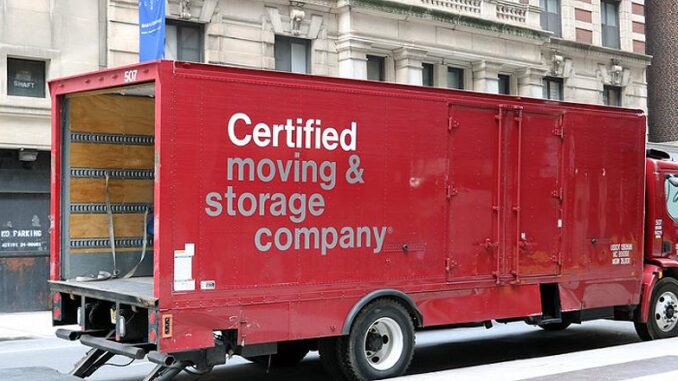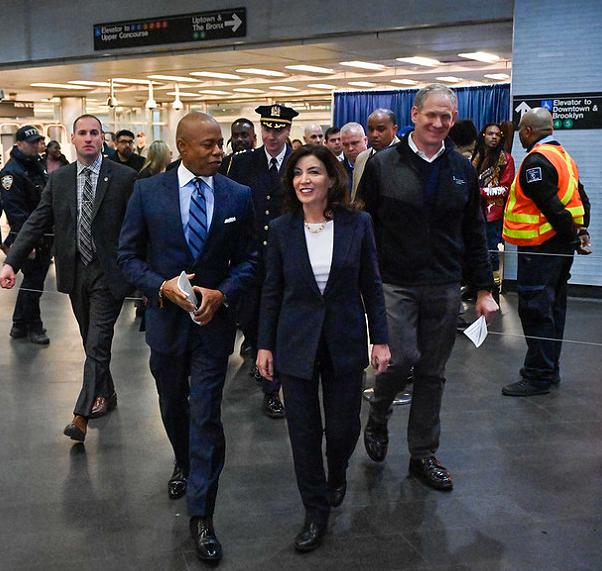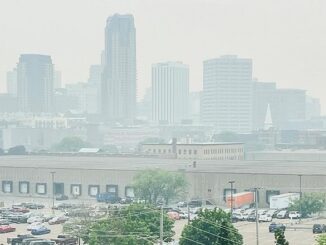
ALBANY, New York, June 9, 2024 (ENS) – It was just over a year ago, in June 2023, that New York Governor Kathy Hochul spoke in support of New York City’s carefully wrought plan to put a toll on vehicles entering Midtown Manhattan – a plan that had just been approved by the federal government as likely to have “no significant environmental impacts.”
“Congestion pricing will reduce traffic in our crowded downtown, improve air quality and provide critical resources to the MTA.” Governor Hochul said back then. “I am proud of the thorough Environmental Assessment process we conducted, including responding to thousands of comments from community members from across the region. With the green light from the federal government, we look forward to moving ahead with the implementation of this program.”
There’s no doubt that New York City’s streets are clogged. Drivers contend with heavily congested roads in a densely populated area. The City alone operates over 30,000 vehicles, the largest municipal fleet in the country.
Manhattan’s congestion pricing was scheduled to go into effect on June 30, 2024, final arrangements were being made. But on Friday, just 25 days before tolling was to start, Governor Hochul slammed on the brakes.
In a video message from Albany on the cost of living, Governor Hochul announced that she has paused “indefinitely” the state’s congestion pricing program for New York City.
“Circumstances have changed and we must respond to the facts on the ground – not from the rhetoric from five years ago,” Governor Hochul said. “So, after careful consideration, I have come to the difficult decision that implementing the planned congestion pricing system risks too many unintended consequences for New Yorkers at this time. For that reason, I have directed the MTA [Metropolitcan Transit authority] to indefinitely pause the program.”
Tolls would have varied by type of vehicle and the time of day.
Vehicles without an E-ZPass would pay 50% more than the usual rate. E-ZPass holders travel thru toll plazas in designated lanes where the toll is paid electronically from a pre-paid account, most without having to stop, and in many cases at near highway speeds.
Type of Vehicle
Passenger and small commercial vehicles such as sedans, SUVs, pick-up trucks, and small vans would have paid $15 to enter the tolling area – from 60th Street in Manhattan to the tip of the island – in peak hours, from 5 AM to 9 PM on weekdays and 9 AM to 9 PM on weekends. During off peak hours, $3.75 would have been the toll.
Motorcycles would have been charged $7.50 during peak hours and $1.75 off peak.
Trucks and buses would have paid from $24 to $36 during peak hours and $6 to $9 off peak.
Trucks and buses would have been charged depending on their size and function during both peak and off-peak hours.
Taxis and For-Hire Vehicles
Taxis and for-hire vehicles would have been charged a per-trip toll, paid by the passenger.
Green and yellow taxis and black cars: $1.25 per trip
App-based for-hire vehicles: $2.50
“Let’s be real,” the governor said, announcing the pause, “a $15 charge may not mean a lot to someone who has the means, but it can break the budget of a working- or middle-class household. It puts the squeeze on the very people who make this city go: the teachers, first responders, small business workers, bodega owners. And given these financial pressures, I cannot add another burden to working- and middle-class New Yorkers – or create another obstacle to continued recovery.”
“We remain fully committed to advancing all the improvements that New Yorkers have been promised. That includes immediate investments in reliability and accessibility: track repairs, new signals, adding more elevators at subway and commuter stations. It means security cameras and other technologies to improve safety for riders throughout the system,” Hochul said.
And she wants to move forward with “transformative projects,” like the extension of the Second Avenue Subway and the Interborough Express, that would connect underserved areas of Brooklyn and Queens. Planners consider that both projects would ease congestion.
The initial shock of the abrupt change of plans soon gave way to acceptance for most politicians. The state’s Republican lawmakers were glad to see the new tolling program go, but many Democrats, too, saw how difficult it would have been to impose new costs now.
New York State Assemblymember Christopher Eachus, a Democrat, said, “NYPD, FDNY, nurses, teachers, and all the hardworking commuters in my district are breathing a sigh of relief today. My district, which includes Orange and Rockland County, is a transit desert without a single one-seat train ride to NYC. To impose our working-class residents with a $15 tax to simply enter Manhattan without real transportation alternatives was irresponsible and would have been an unmitigated economic disaster. I am thankful to Governor Hochul for her bold and correct decision to delay congestion pricing, and look forward to working towards environmental goals that do not put undue and disproportionate burdens on our residents.”
Assemblymember Ed Braunstein, a Democrat, said about his district, “Northeast Queens has limited transit options. Many working families must drive to commute into Manhattan. As New Yorkers are grappling with an increased cost of living, it is not the right time to implement congestion pricing. Today, I stood with many of my state colleagues at this morning’s press conference to celebrate the Governor’s decision to delay implementation.”
New York City Council member Kalman Yeger, a Democrat, said, “The Congestion Pricing Scheme has nothing to do with congestion. It’s just a tax on hardworking New Yorkers trying to get by. I’m glad we’re putting the breaks on this bad plan. Rooting out waste, inefficiencies and unending consultancies at the MTA is a better way to make the MTA the sustainable public transportation option New Yorkers deserve.”
Municipal Labor Committee Chair Harry Nespoli said, “On behalf of the Municipal Labor Committee and the several hundred thousand hardworking New York municipal employees we represent, I commend Governor Hochul for her decision today to indefinitely pause the Congestion Pricing program. As we expressed in our submission to the Court in lawsuits challenging the plan, Congestion Pricing would disproportionately impact the health and well-being of our workers, particularly those living in communities surrounding Manhattan, as it redistributes traffic, pollution and a significant financial burden to those living and working in already vulnerable neighborhoods at a time when our City continues to recover from the pandemic.”
From Staten Island, Protectors of Pine Oak Woods former President Cliff Hagen said, “Governor Hochul has again shown courageous leadership with her decision to indefinitely pause Congestion Pricing. The plan was designed to benefit the wealthiest neighborhoods in NYC at the expense of all others. Those other neighborhoods, especially here on Staten Island, would also bear the undue environmental burdens of increased traffic, idling cars and exacerbated parking issues on local streets. Governor Hochul has been responsive to the needs of all New Yorkers. Staten Island will be a cleaner, greener borough because of Governor Hochul.”

New York Mayor Eric Adams weighed in this way, “Many people thought the decision of congestion pricing was a decision that came out of City Hall. It was not. It was an initiative that was passed by the state, started with the former governor and made its way down here to New York City. They have to deal with the hole in the MTA [Metropolitan Transit Authority] and come up with how to do so. The city does not control the MTA. We say that over and over again. New Yorkers use the transit system, but we are creatures of Albany.”
“One of the major problems we’re having is with deliveries of large trucks,” Mayor Adams told a local TV host. “We should look at incentives for overnight deliveries. I think that we’ve never really explored on how do we get trucks off our roads and the process of doing so. The double parking, making sure that we properly don’t have the double parking problem as I move throughout the city. “
“Then incentivize our subway system. We have one of the best subway systems and bus systems in the entire globe. We need to utilize it better. I think bus lanes and bike lanes, some of the things that we’ve been doing, can really decrease the amount of vehicle traffic.”
To his critics who say bus and bike lanes have narrowed the roads and created a lot more bottlenecks in an already tight traffic situation, Mayor Adams replied, “New York City, 8.3 million people, 35 million opinions.”
Featured image:
© 2024, Environment News Service. All rights reserved. Content may be quoted only with proper attribution and a direct link to the original article. Full reproduction is prohibited.



